Cover Letter Template for Scientific Journal Submissions
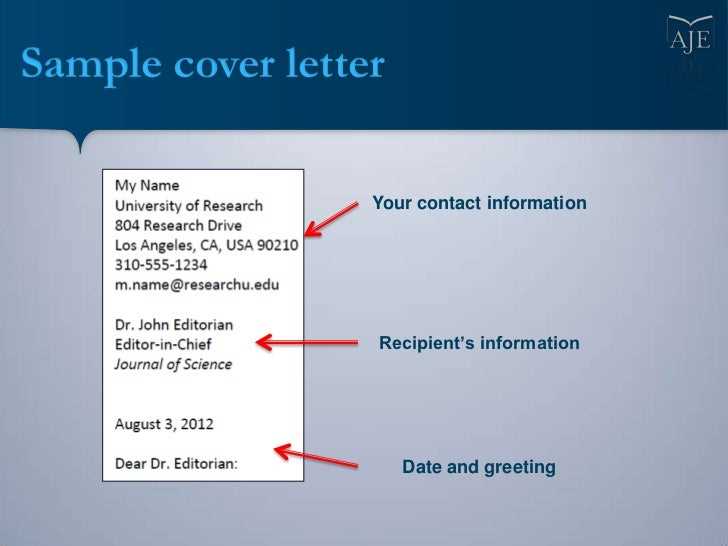
Submitting your research requires a well-crafted introduction that can make a lasting impression. The first step in presenting your work is to effectively communicate its relevance and value. A carefully constructed message can help your submission stand out, ensuring that it receives the attention it deserves.
Clarity and professionalism are key when drafting this introductory section. It should outline the purpose of your work, why it’s important, and how it contributes to the existing body of knowledge. This initial communication sets the tone for the review process and establishes credibility with the recipients.
While each submission may require slight modifications based on the recipient, maintaining a clear structure is crucial. Tailoring your approach without losing sight of the essentials will increase your chances of success and help create a positive first impression.
Essential Components of a Cover Letter
When preparing an introductory message for a submission, it’s essential to include specific elements that communicate your research’s significance. This section serves as a way to present your work in a concise and professional manner, ensuring that the recipient understands the context and value of your contribution.
Introduction is the first key component. This part should briefly introduce your study, including its title and main objective. It’s important to immediately grab attention by explaining why your work is worth considering.
Relevance is another crucial element. Clearly highlight the purpose of your research and its connection to the field. You need to demonstrate why your work fits well with the goals of the publication or organization you’re submitting to.
Originality is essential to mention as well. Emphasize how your work offers new insights, fills gaps in the current knowledge, or presents a novel approach. It’s important to make it clear that your research brings something fresh to the table.
Conclusion is where you finalize the message by reiterating the significance of your work and expressing your desire for further consideration. It’s a good practice to thank the recipient for their time and consideration before ending the message on a polite note.
How to Address the Editor Professionally
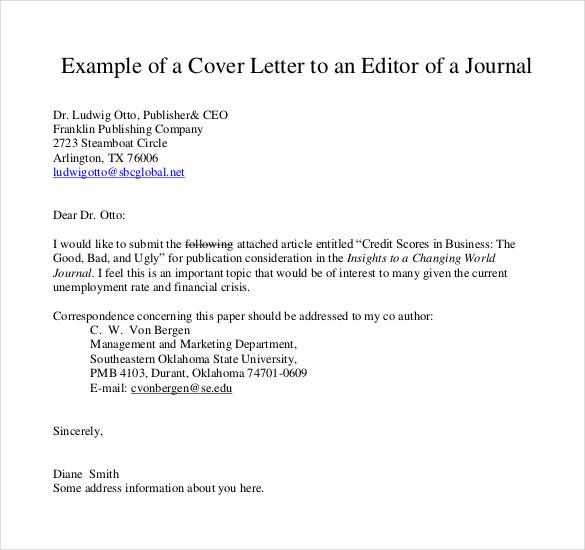
Maintaining a professional tone when addressing the editor is essential in any submission. Proper etiquette and respect for the recipient’s position create a positive first impression and demonstrate your seriousness about the process. This section outlines key practices to ensure your communication is both respectful and effective.
Proper Salutation
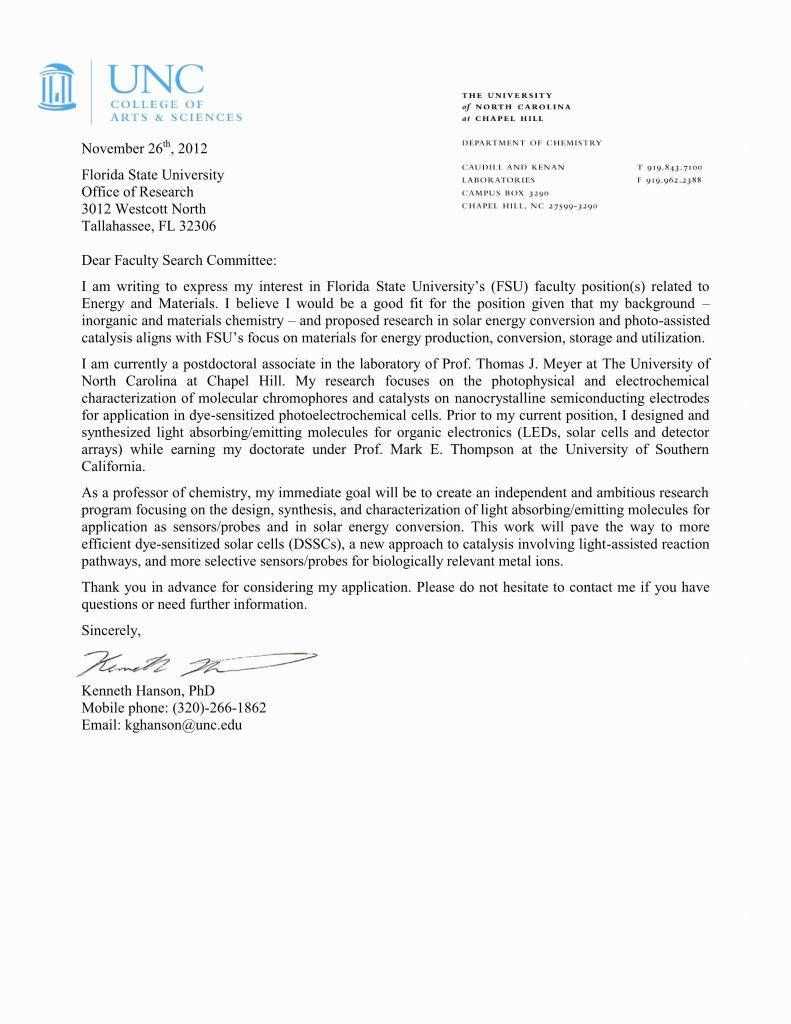
Start with a formal greeting that reflects the recipient’s title. For instance, if you know the editor’s name, use “Dear Dr. [Last Name]” or “Dear Professor [Last Name].” Avoid using casual or generic terms like “To whom it may concern.” If the editor’s name is unknown, “Dear Editor” is a suitable alternative.
Polite and Respectful Language
Throughout the message, maintain a tone that is both courteous and professional. Avoid overly familiar phrases and instead use formal expressions such as “I would like to submit my work for your consideration” or “I appreciate your time and consideration.” Respect for the editor’s role is essential, as it establishes the appropriate tone for your submission.
Tailoring Your Submission for Specific Journals
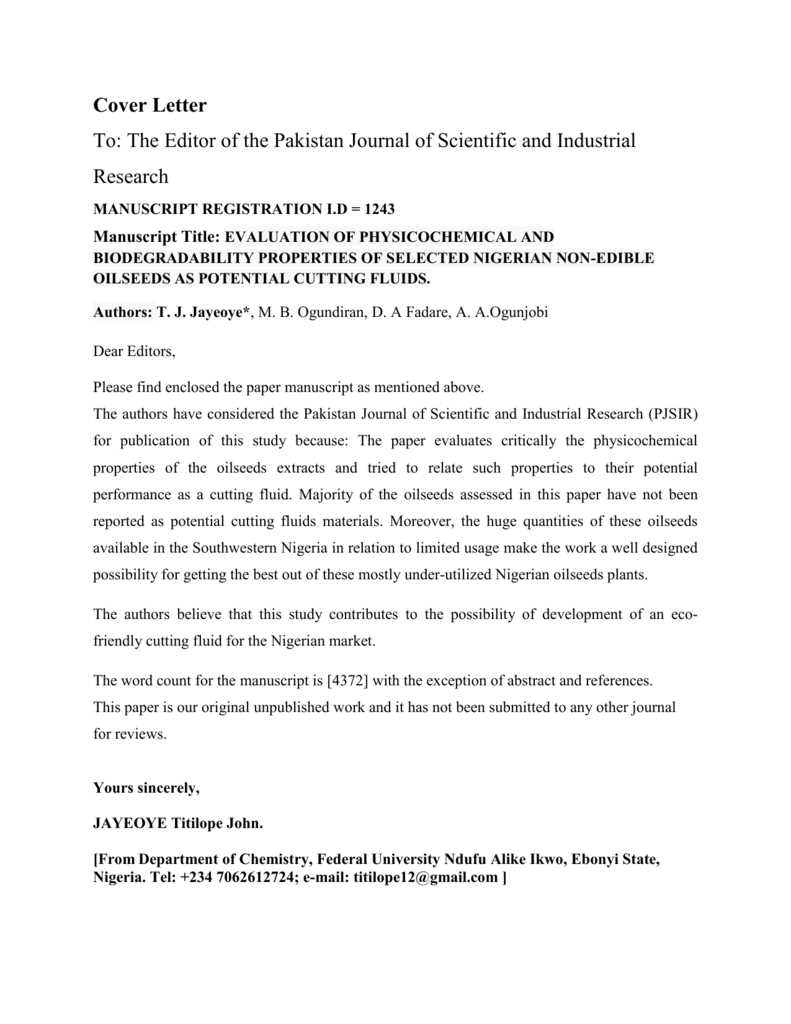
Customizing your submission for each recipient is an important step in increasing your chances of acceptance. Every organization or publication has its own focus and audience, so it is crucial to align your communication to reflect these specific aspects. A one-size-fits-all approach may not be as effective as addressing each entity’s unique goals and values.
Research the Target Publication
Before submitting, take the time to familiarize yourself with the publication’s aims, scope, and previous issues or topics they have covered. Highlight aspects of your research that directly align with their mission and showcase how your work adds value to their existing body of knowledge.
Emphasize Relevance to the Audience
Consider the audience of the publication when drafting your communication. Tailor your language and focus on the areas of your work that would resonate most with their readers. Demonstrating how your research addresses the needs or interests of their community can significantly strengthen your submission.
Common Mistakes to Avoid in a Cover Letter
Crafting an effective introduction is key to making a strong first impression. However, there are several pitfalls that many make which can weaken the message. Avoiding these errors can greatly improve the chances of your submission being taken seriously.
Using Informal or Generic Language
One of the most common mistakes is using informal or overly casual language. Always maintain a professional tone throughout your communication. Phrases like “Hi” or “To whom it may concern” can make your submission seem less serious. Instead, use formal greetings and respect the conventions of the field.
Overloading with Unnecessary Details
While it’s important to provide relevant information, avoid overwhelming the recipient with excessive details. Focus on the key aspects of your work that are most pertinent to the publication’s mission. Providing too much background or unrelated information can detract from the central message of your submission.
How to Highlight Your Research Impact
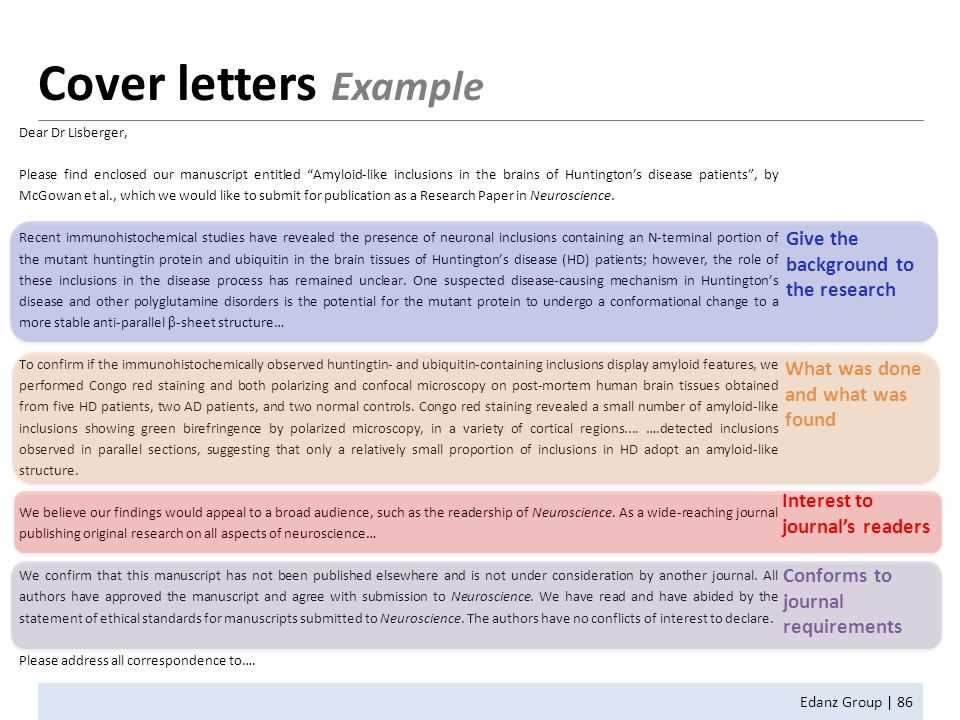
Demonstrating the significance of your work is essential to showing its value and relevance. Highlighting the impact of your study allows the recipient to quickly grasp why your research is worth their attention. A clear presentation of the outcomes and implications will make your submission stand out.
Focus on Novelty and Contribution
To effectively highlight your research impact, emphasize what makes your work unique. Explain how your findings add new insights to the field, and outline the contributions it makes. Consider the following points:
- What gaps in knowledge does your research fill?
- How does your work challenge existing ideas or approaches?
- What new methods or techniques have you introduced?
Describe Practical Applications
Illustrating how your research can be applied in real-world scenarios is crucial in demonstrating its impact. Focus on its potential to influence practice, policy, or future research. Include examples of:
- How your work could lead to innovations in industry or technology.
- Implications for solving pressing problems or improving current systems.
- Future research directions that your findings inspire.
Final Tips for a Strong Submission
Ensuring that your communication is clear, professional, and targeted will increase the chances of a successful review. To give your submission the best chance, consider the final details that can make a significant difference in how your work is received.
Double-Check for Accuracy
Before sending your submission, it’s crucial to review everything carefully. Ensuring accuracy in your contact details, the title of your work, and the alignment with the submission guidelines can prevent unnecessary delays or rejections.
Maintain a Clean and Organized Format
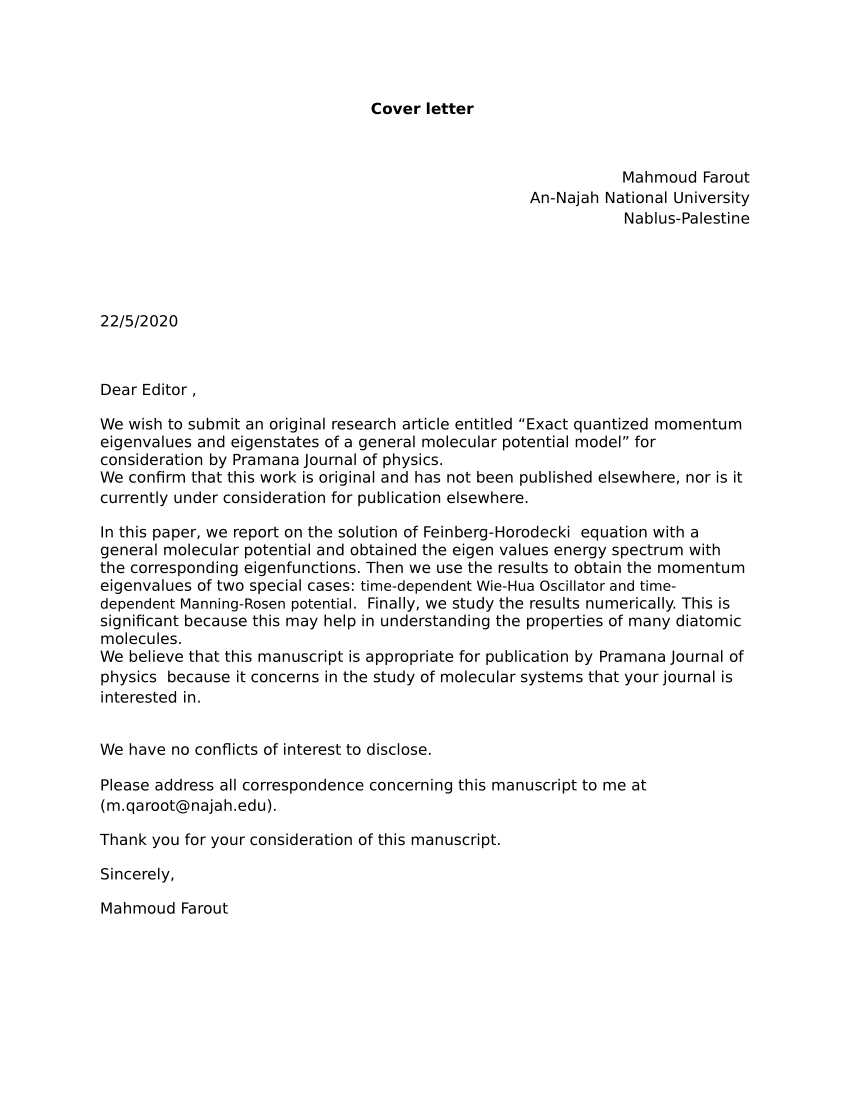
Present your work in a clear, well-organized manner. Avoid overly complicated formatting or distracting elements. Stick to a simple and professional structure that makes it easy for the recipient to assess your submission.
| Aspect | Action |
|---|---|
| Accuracy | Review all details for errors, including names and references. |
| Structure | Ensure your message is concise, well-organized, and focused. |
| Adherence to Guidelines | Follow the recipient’s specific instructions regarding format and content. |